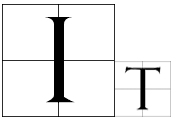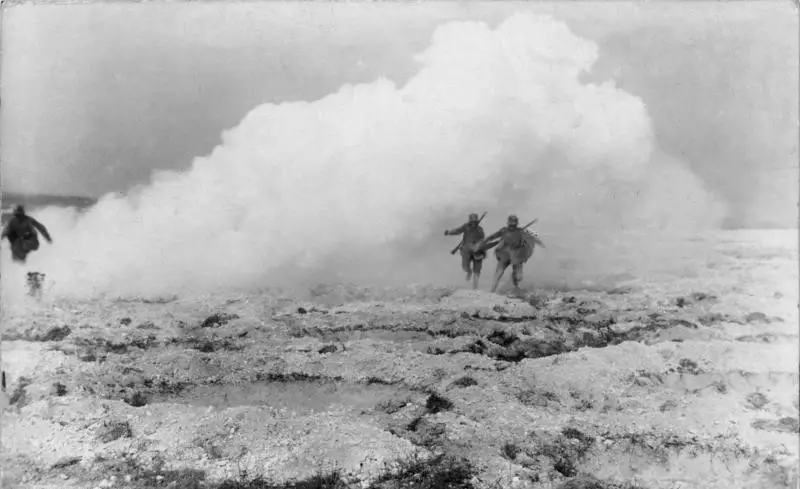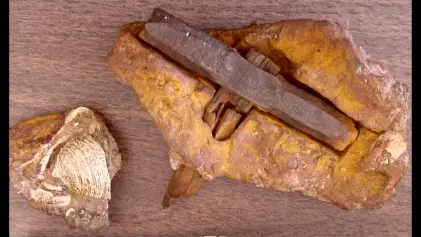 may seem surprising, but not the Germans were the first to use chemical weapons in World War I, but the French. Since August 1914, they have used tear gas, more precisely two chemicals, xylyl bromide, and ethyl bromoacetate, both with a pleasantly aromatic, fruity odor. The gases were dispersed like sprays, causing irritation to the ears and eyes, lung damage, nausea, and vomiting. The symptoms disappear after about half an hour. Obviously, apart from acute discomfort, these gases could not be effective on the battlefield as they were not very lethal.
may seem surprising, but not the Germans were the first to use chemical weapons in World War I, but the French. Since August 1914, they have used tear gas, more precisely two chemicals, xylyl bromide, and ethyl bromoacetate, both with a pleasantly aromatic, fruity odor. The gases were dispersed like sprays, causing irritation to the ears and eyes, lung damage, nausea, and vomiting. The symptoms disappear after about half an hour. Obviously, apart from acute discomfort, these gases could not be effective on the battlefield as they were not very lethal.
The Germans will also use an enormous amount of tear gas (over 18,000 chemical howitzers) against the Russians stationed at Bolimov, near the Rawka River, west of Warsaw, on January 31, 1915. In October 1915, the Germans attacked Neuve Chapelle with the same gases. But with Fritz Haber, the head of the chemical weapons of the German Army, things change radically. He initiated, on April 22, 1915, the use of chlorine as a combat gas, in Ypres, Belgium. At five o’clock in the afternoon, the Germans opened over 6,000 canisters, blowing 168 tons of chlorine into the area where the French Divisions 45 and 87 were positioned.
Chlorine

Chlorine, a gas about two and a half times denser than air, has a pale green color and an exotic aroma that decomposes: pineapple and pepper. Very reactive, in contact with water, this gas generates hydrochloric acid, which, once it reaches the airways, is deadly, causing the lungs to burn chemically. In small amounts, it causes coughing, vomiting, and eye irritation. The unprotected soldiers died immediately. It appears that about 1,000 soldiers lost their lives during the First Ypres chlorine attack.
But the strategic effect expected by Haber was a minor one because, in the beginning, the German soldiers were not offered any protection against such chemicals. Moreover, the chlorine under pressure was released from canisters and “thrown” in the form of a cloud in the air, or changing the wind direction could radically change the situation. Chlorine is not invisible, and until the use of gas masks, soldiers improvised, defending their faces with handkerchiefs or damp cloths, often soaked in their own urine.
The British will also use chlorine in the battles of Loos on September 25, 1915, but with disastrous results, because the toxic cloud has “walked” in both camps.
Grignard

Victor Grignard (1871–1935), Nobel laureate in chemistry in 1912. He is known for a chemical reaction that bears his name and which binds organic chemistry to metal compounds. Grignard was produced during the war and, on an industrial scale, a second fighting gas by the name of phosgene — carbonyl chloride. It is a completely colorless gas, with hay or freshly cut grass. However, when the gas gets odor, it already has an extremely toxic concentration. It dissolves in the water, and once inhaled, it reaches the lungs to the level of the alveoli, where it slowly converts to carbon dioxide and hydrochloric acid, which gradually burns alveolar tissue and causes pulmonary edema.
About three hours after inhalation, an aching cough, followed by cyanosis and asphyxia, and until the moment of death, the intoxicated, without losing consciousness, has terrible agony and prolonged suffocation for several days. High doses of phosgene can cause death in seconds. It appears that the gas was first used, in combination with chlorine, in December 1915, also near Ypres, at Wieltje — a much more lethal association designed by Fritz Haber himself.
Phosgene and another similar compound, diphosgene (trichloromethane chloroformate), are responsible for about 85% of the over 90,000 who died asphyxiated during the First World War. Its late effects, even if they are terrible, do not make it very effective on the battlefield because the immediate death of the opponent is not obtained.
Mustard gas
However, considered the most sinister fighting gas, and which has had a “media coverage”, it is the mustard gas. Mustard gas (diethyl dichloric sulfide) was the most widespread chemical weapon of the Great War. In its pure state, it is a colorless liquid and generates a gas that discourses very discreetly in yellow and has a pronounced odor of garlic or horseradish. Like other chemicals, gas is lethal only in large quantities. This gas was produced by Fritz Haber in order to prove himself.
The mustard gas produces chemical burns, first a massive irritation of the skin and the respiratory tract, followed by the appearance of bubbles, and large blisters on the body, filled with a yellow fluid of inflammation. At the level of the lungs, it causes the destruction of mucous membranes and pulmonary edema and, depending on the contamination, it can cause burns and massive skin infections, with permanent disfigurement, blindness, and late appearance of skin cancer.
The gas was first used by the Germans on July 12, 1917, in the battle of Passchendaele (today, Passendale) near Ypres. Although the death rate was a small one, of only 2–3%, the images of soldiers mutilated by mustard gas made their way around the globe. Veterans have stated that this was the worst weapon to fight against as the pain it would cause would be so unbearable that you would rather want to just be shot. As the death rate from chemical weapons was quite low in the First World War, it has not seen much use in the Second World War.
Avid Writer with invaluable knowledge of Humanity!
Upcoming historian with over 30 million views online.
“You make your own life.”





